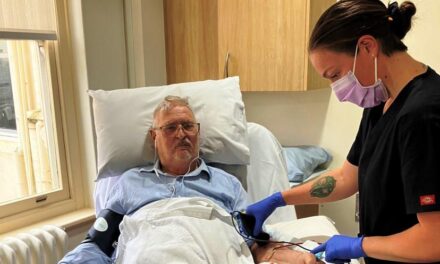Central Highlands Rural Health (CHRH) has partnered with Hepburn Shire Council to provide grade five and six students across Hepburn Shire primary schools with free access to important puberty education resources.
To coincide with the continuation of CHRH’s successful puberty education program in primary schools, two important initiatives with Council will further educate and prepare the youth of the Shire.
From July, Hepburn Shire libraries in Clunes, Creswick, Daylesford and Trentham will have a display stand of 13 books recommended by CHRH as part of its puberty education program. Students and parents from Hepburn Shire primary schools will have access to the books to learn about the physical and emotional changes associated with puberty.
In addition to the library resources, Council and CHRH have partnered to deliver the Reusable Period Products Program in all Hepburn Shire primary schools.
Following the recent success of the Council’s Reusable Voucher Program, the Reusable Period Products Primary School Program recognises the significant waste to landfill that period products generate. The Program aims at an early intervention education, to offer students who menstruate an opportunity to utilise reusable period products from the beginning of their menstruation journey.
“Council is pleased to support this important and progressive program as part of our commitment to the health and wellbeing of our primary school-aged children,” said Hepburn Shire Mayor, Cr Brian Hood. “This is an important partnership program with Central Highlands Rural Health to educate and empower young people in our Shire.”
As part of CHRH’s yearly primary school puberty education program, grade five and six students in need of period education will attend a 60-minute session to learn about all things related to getting their periods and how to manage them. Students who attend will receive two pairs of reusable period underwear and a wet bag to keep supplied by a local business based in Kyneton called Darlings Downunder.
Research shows that most tweens and teens will continue to use the first sanitary products they were introduced to for most of their menstruating life. Unfortunately, this tends to be pads containing plastic and tampons that ultimately end up in landfill. Clean Up Australia data suggests that over the course of a lifetime, a single menstruator will use somewhere between 5,000 and 15,000 pads and tampons.
Amidst Australia’s cost-of-living crisis, the cost of sanitary products has increased. Data from Plan International reports that almost two-thirds of Australian women are struggling to afford period products and 57% say that they are more expensive than in previous years.
The aim of the program is to reduce waste to landfill by removing the significant barrier of access and financial ability to purchase reusable period products, and create lifelong sustainable practices for young people.
This article is based on a media release from Hepburn Shire Council.





